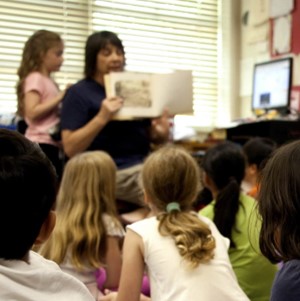Here are 9 areas of literacy teachers need to focus on when they are teaching.
The first one is phonics or the sound, symbol code.
- Phonics
There are 26 letters in the English alphabet, A-Z. These letters combined make 46 sounds; a-, e-, i-, o-, u-, are the way we represent the short vowel sounds, so that is 5 of the 46 sounds I am talking about, but the tricky thing is, there are at least 1200 letter combinations that make those 46 sounds.
It‘s this ratio of 46 : 1200+ that makes reading and learning the English language so difficult and more difficult again is learning to be an accurate speller.
Approximately 50% of the adult population struggle with spelling.
With new words being created by advertisers, words from other languages becoming part of our everyday chit chat and abbreviations from texting and slang; there are more words being created every day.
the English language.”
The reason phonics is so important and why it’s my number one, is because it is the only logical way a beginning learner can get a clear indication of a word they are attempting to read. Children will use their sound, symbol code skills to work out how to read and write words.
As you get older, there are other ways to learn how words are read and spelt, but every beginning learner needs a good phonics education program as well as a good set of phonics readers.
- Decoding
This is number two on my list.
Decoding is all about reading. When you look at a series of symbols on the page in a word like apple, you look at the individual symbols; the a, the p, the p, the l, and the e, as a series of symbols, but there is a whole transformation that is occurring in your head.
Once you have identified the letter symbols (a,p,p,l,e), you actually begin to transform those symbols into sounds. These are being processed in your brain and then you are adding meaning to them, whilst saying the word in your mind or out loud: “apple”.
These are all the processes that have to happen and we call it, “decoding”.
letters together are saying.”
The third one on my list is ‘encoding’.
- Encoding
to write words on the page.”
So, encoding is the child’s ability to think of a word, let’s say ‘ambulance’ and then write the word. Let’s say you want to write a story about an ‘ambulance’. You know the word, have heard the word in stories or seen a real ambulance on TV and now you want to write the word ‘ambulance’ on the page with your pen or type it on a computer.
Now you take the verbal utterance of the word ‘ambulance’ and break it down into the sounds and represent these sounds on the page, with the letters of the alphabet, “am-bu-lance.” This is a difficult word to sound out, like many words in the English language. It could be am-bu-lence, am-bew-lence, am-beau-lance, am-bue-lense and so on.
Writing words takes encoding skills and teachers need to begin the process of teaching this skill early on.
to encode the word as you write it.”
This gives children an opportunity to see what they should be doing when they are writing.
They go through the process without even thinking.
For children with literacy difficulties, there is always a thought process attached to encoding, a word,
a doubt, a level of stress to write word after word correctly, especially those words they have
no visual memory for, and this causes
sheer mental exhaustion.”
- Reading practise
There should always be reading practise in the mix when teaching literacy. This reading practise should not necessarily be unsupported reading even for older kids.
paragraph about or page about.”
Don’t forget those actions while reading, hand symbol for capital letters, clapping for full stops, clicking fingers for commas and others, including questions marks or exclamation marks. Check out my Facebook Live video here for visual examples of these.
- Reading comprehension
Reading comprehension is Number 5 and it’s what makes reading interesting.
There is simple comprehension
“Bob had a red jumper. He wore it on a cold day.”
What colour was Bob’s jumper? It was red.
What kind of day was it? It was a cold day.
Then there’s inference
Why might it have been a cold day? Where might Bob live? What season might it have been?
Inference is a higher level of comprehension, where the intention of the text is inferred and predictable. This can be tricky for beginning or struggling readers. It’s like asking a child to read between the lines whilst the child is often still asking themselves…What word is that?
- Fluency
at a rate that is appropriate.”
It is about reading at a speed with minimal mistakes. I have a really great exercise to help children improve their fluency and I’m going to tell you about that in another blog post coming up. Look out for that one!
I call it ‘Speed Training’. All of my kids did it with me and we saw some great gains in fluency and processing rates.
- Availability of learning support
This is being able to help the child who is indicating from day one that they are having difficulty with literacy and reading and spelling the English Language.
We need to be very aware of the child who is struggling early on and provide extra support. This support can be in any of the areas already covered in this article.
So as a teacher, how do you know which area you need to focus on to begin with?
The way I do it is by asking the child questions.
I say to the child, “When you are looking at the words on the page of your reader, tell me, what you are doing?”
Where are your eyes going?
What are you thinking about?
What are you saying to yourself?
Speak out what you are doing.
You can identify very quickly what areas they need help with. So, ask lots of questions, to get started, the earlier the better.
- Writing
It doesn’t matter what age the child is, get them writing. They can pick up any writing implement and start writing even if it’s scribble.
What you can also do, is scribe for them. A great way to do this is to; let them have a go at writing some sentences and then put a line under their writing and write the correct words out for them. They can actually see what the words look like, if they had written them accurately. You are basically modelling for them.
What this does is give them the English code right in front of their eyes and right next to their writing attempt. Every time they read their story which they love to do, they will see the real words at the same time.
This is the reinforcement they need to give them confidence and the story can be read over and over by them, by teachers, parents or grandparents.
- Punctuation and grammar
I always thought punctuation and grammar was boring when I went to school, but it doesn’t have to be. We have already talked about the clapping of hands for full stops or periods, clicking fingers for commas and hand signals for exclamation marks or questions marks.
and kids love it.”
I have spoken before about the SpeechToSpellingCode™ I have created. In it I teach punctuation and grammar with actions and believe it or not, it’s a favourite thing among many children.
These are the 9 areas of literacy teachers need to focus on; Phonics, Decoding, Encoding, Reading practise, Reading comprehension, Fluency, Availability of learning support, Writing and Punctuation and grammar.
Don’t forget to check out my Facebook Live video on this topic on YouTube here and Facebook here. I cover even more on the videos here and demonstrate punctuation with actions.




















As a retired primary teacher, I find this article “spot on.” All the things we were aiming to achieve during the 40 years of teaching experience. Well done Liz.